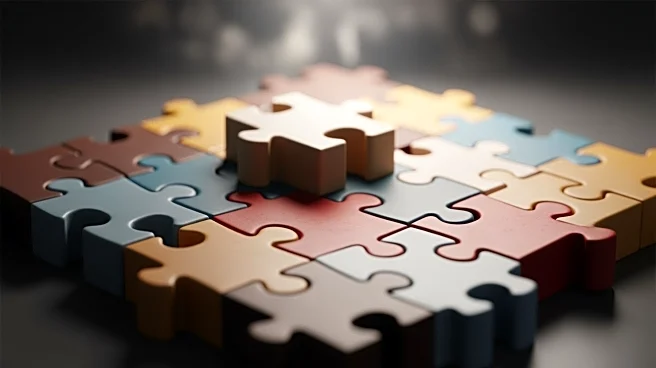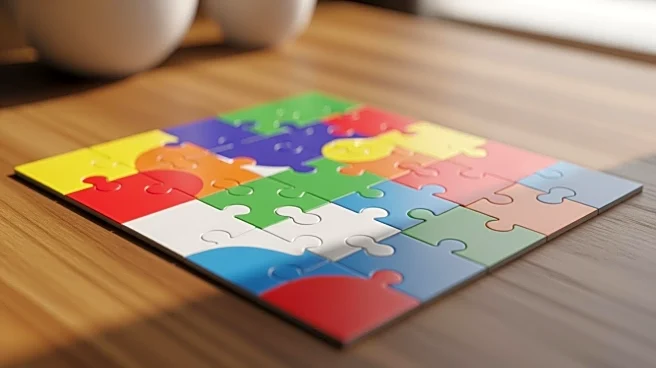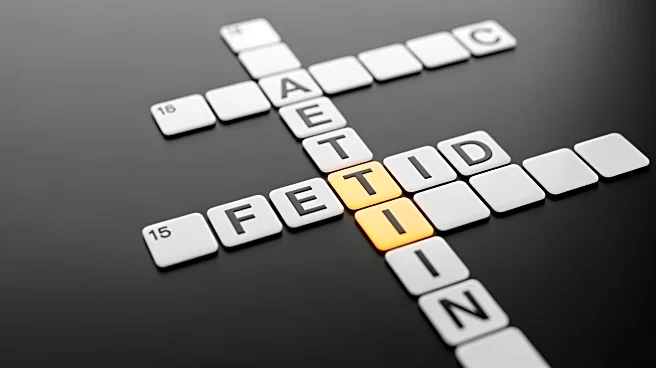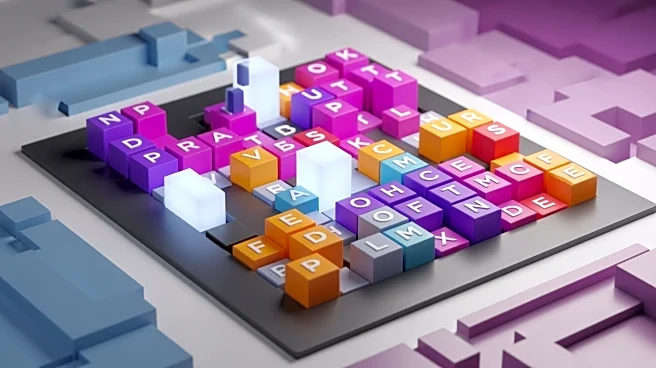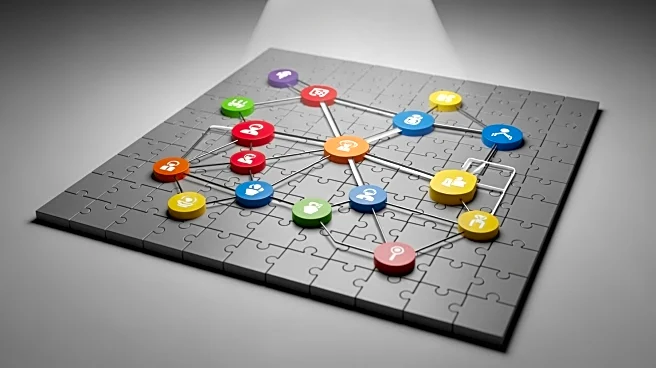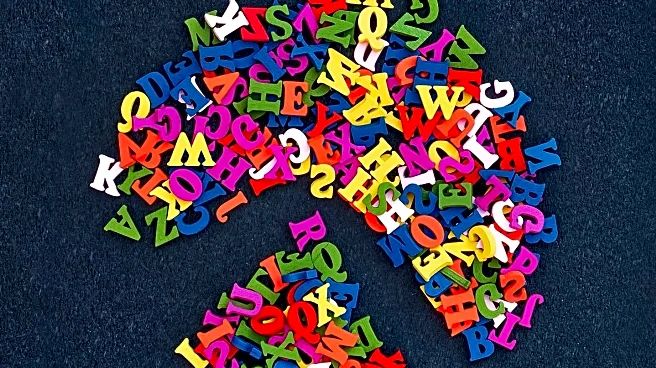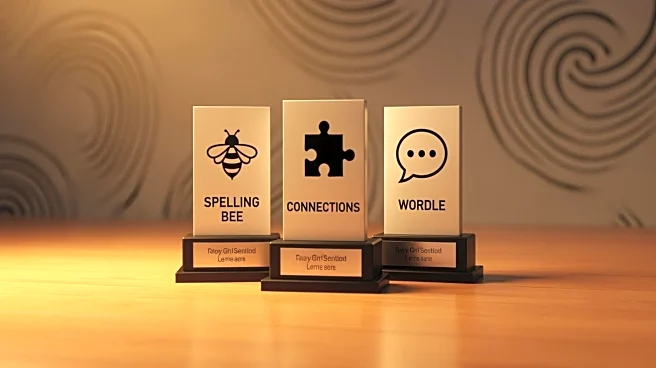What's Happening?
The New York Times has released its latest Connections puzzle for October 28, 2025, presenting players with a challenging set of categories. The puzzle, known for its difficulty, especially in the purple
category, requires players to group words based on thematic hints. The categories for this edition include 'Unoriginal,' 'Shrewd,' 'The clicker,' and 'Take celeb names, add one letter.' The puzzle is part of the Times Games section, which also includes popular games like the Mini Crossword and Wordle. Players can track their progress through a Connections Bot, which provides a numeric score and analyzes answers. This feature allows registered users to monitor their puzzle completion rate, win streaks, and perfect scores.
Why It's Important?
The NYT Connections puzzle is a part of the broader trend of digital games that engage users in cognitive challenges, promoting mental agility and problem-solving skills. As part of the Times Games section, it contributes to the newspaper's strategy to attract and retain subscribers through interactive content. The puzzle's complexity and the introduction of the Connections Bot enhance user engagement by offering personalized feedback and progress tracking. This approach not only boosts user interaction but also encourages a competitive spirit among players, potentially increasing subscription rates and user retention for the New York Times.
What's Next?
Players can expect continued updates and new puzzles from the New York Times Games section, with the potential for more interactive features like the Connections Bot. As the popularity of such puzzles grows, the Times may expand its offerings to include more diverse and challenging games. This could lead to increased collaboration with puzzle creators and the development of new game formats. Additionally, the Times might explore partnerships with educational institutions to leverage these puzzles for cognitive training and educational purposes.
Beyond the Headlines
The rise of digital puzzles like NYT Connections reflects a cultural shift towards gamification in media consumption. This trend highlights the increasing demand for interactive and engaging content that goes beyond traditional news delivery. It also underscores the importance of cognitive challenges in daily entertainment, offering users a break from passive content consumption. As media companies continue to innovate, the integration of gamified elements could become a standard practice, influencing how news and entertainment are delivered.
